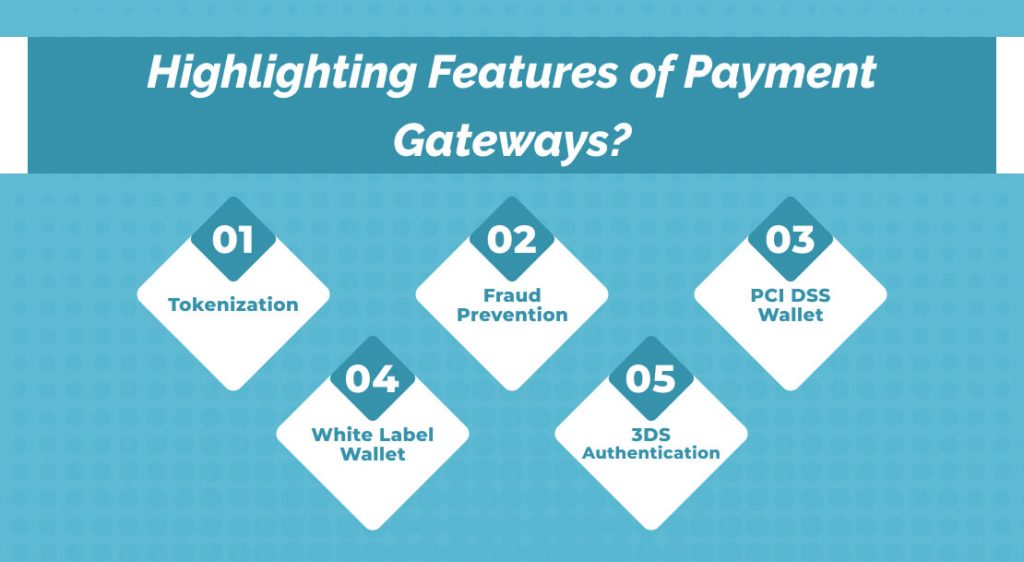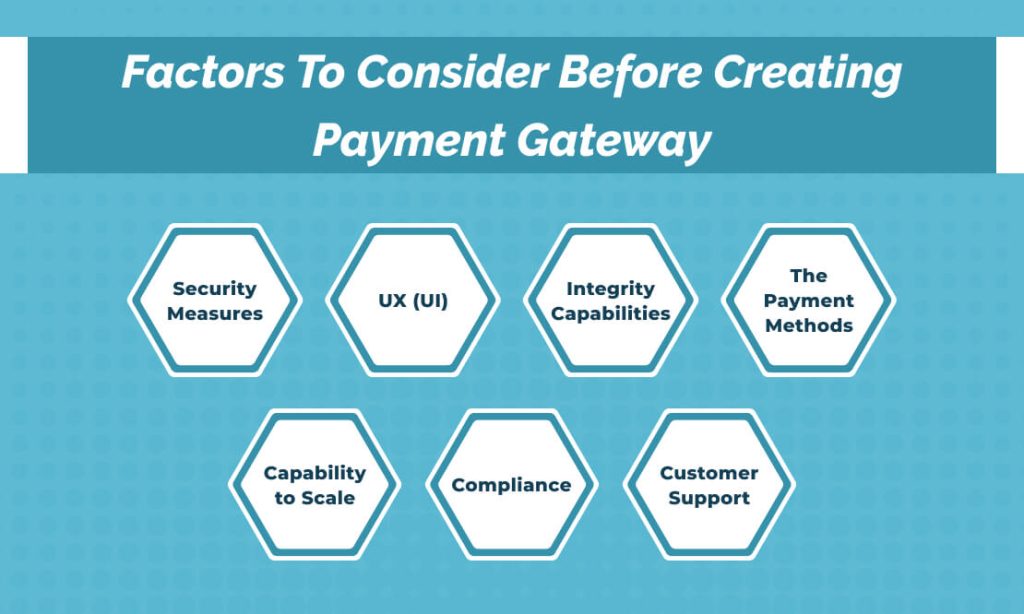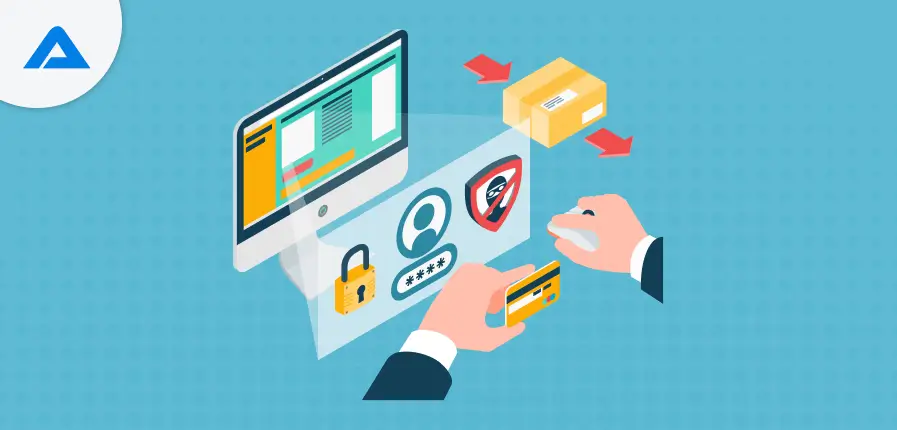In the ever-changing world, everything has shifted to online, from booking tickets to grocery shopping. Moreover, if you’re selling your services/ products online, you’ll need a platform to accept client payments.
A wide range of payment processors are available; one alternative you should consider is integrating payment gateways into your website. In this blog post, you’ll understand the meaning of payment gateways, their benefits, features, and processes, and how they secure your transactions from theft or fraud. This plays a significant role, especially when businesses sell their products or services online. Additionally, you need to ensure that you receive your payments on time. However, clients can pay using different methods, including UPI, credit/debit card, NEFT, online banking, etc.
What Does It Mean for an Online Payment Gateway?
Payment gateways are a type of application or service that allows the secure financial transaction between a buyer or online retailer during the digital transaction process. Imagine a gateway to Payment as an intermediary between the purchaser and the consumer and an institution that handles financial transactions.
Why Business Requires Payment Gateway Integration
Data encryption features help protect sensitive information from fraud, ensure security, and reduce the chance of eCommerce fraud. Controlling transactions is crucial for ensuring an efficient payment process.
We can offer your customers various payment options, such as electronic wallets, credit cards, UPI, and an online payment gateway.

Want to Integrate One of These Payment Gateways to Your Mobile App?

Pooja Upadhyay
Director Of People Operations & Client Relations
Payment Gateway What It Is?
Many events affect the performance of payment gateways. The process begins when the user initiates the Payment. If users input their payment details on the checkout screen, the payment gateway secures the information using the SSL security protocol. Then, the information is encrypted and securely transferred from the user’s device to the Gateway’s server using the SSL connection. The encrypted payment data is transferred via the banking institution.
The payment gateway permits Payment from the customer to the merchant’s account when the Payment is accepted after the transaction has been received. In addition, they send acknowledgment and confirmation emails to both the buyer and the merchant throughout the entire process.
Highlighting Features of Payment Gateways?

Tokenization
When it comes to Card Tokenisation, the card’s details, including the number and expiry date, are not transmitted directly via the computer system. Instead, they are converted into tokens to ensure that the information on the card will not be compromised, regardless of data loss.
Fraud Prevention
Payment gateways use numerous sophisticated fraud detection tools that analyze transaction patterns and behaviour in real-time. Therefore, even if there is fraud, the system is capable of detecting and stopping it.
PCI DSS Wallet
They are compliant with PCI DSS standards to ensure that the cardholder’s information is stored securely in case of subsequent transactions.
White Label Wallet
The White Label Wallet feature was specifically designed for wallets that run on mobile devices. The majority of payment gateways offer white-label integrations for any payment method available through mobile wallets. This helps protect the Payment and makes it more convenient to use.
3DS Authentication
3DS, commonly called 3D Secure, means an additional layer of security is added before the transaction process. This is typically done through an OTP delivered to the customer’s phone or email address.
Benefits of Using a Payment Gateway
Payment gateways offer many benefits, allowing businesses to improve operations and increase customer satisfaction. These are the main advantages:
Improved customer experience
Modern consumers want a simple shopping experience. A payment gateway can meet these requirements. It allows customers to pay anytime, regardless of where they are and on any device. This ease of Payment not only improves user experience but also improves the lifetime value of the customer (LTV), which is the profit that an organization earns from a specific customer. A positive experience during the payment process can improve customer loyalty and result in a greater probability of repeat purchases and long-lasting customer relationships.
More security
Payment gateways employ extreme security measures to guard sensitive customer information. They utilize advanced encryption technologies and secure methods to protect confidential data, such as credit cards, and ensure that the information is protected from any potential security breach. In addition, many payment processing companies use advanced fraud detection software to check transactions for suspicious ones. These strong security measures help establish and increase customer confidence in the payment process.
Speedier processing
Payment gateways with automated systems handle transactions much faster than manual procedures. This allows for more efficient checkout experiences for users and increases business sales, thus increasing cash flow.
Global expansion
The payment gateway is vital for companies trying to expand their global market. Many payment gateways support various currencies, allowing businesses to cater to customers’ needs from different countries. This benefits products or services worldwide because industries can accept payments in their customers’ local currency. This can enhance customers’ shopping experience and greatly aid the business’s efforts to expand worldwide.
Payment gateways don’t just enable online transactions; they also assist in improving businesses’ overall efficiency. Providing a secure and more efficient method of transactions and expanding the reach of global payment gateways are essential to improving the online market.
Step By Step Guide How to Integrate a Payment Gateway
Integrating payment gateways on the website or mobile application is a well-defined process. But they’re generally simple. The procedure itself could differ depending on the specific payment processor that you’re employing and the platform that your website is built on, but here’s the step-by-step process:
Choose a payment method.
The first step is selecting the best payment processor that will meet your company’s requirements. When choosing the payment gateway you wish to work with, you should consider transaction fees, payment types accepted, security measures, and connectivity with an online shopping platform.
Set up an account for merchants.
Depending on the processor you use and the payment gateway you choose, you may require a merchant account for merchants. Certain payment gateway providers, such as Stripe, offer merchant accounts through their gateways and offer a full payment solution that is easy to create.
Find API keys
Once you’ve established the payment gateway, API keys will be required. API keys are unique identifiers that connect an online app or website to services your Payment processing company provides. They are part of the system that ensures safe communication between your company’s system and the payment gateway. These keys allow your website to connect directly with the Gateway’s server.
Integrate the payment gateway on your site.
The procedure can vary depending on the payment processor you choose and the platform you use for your website. Some platforms for e-commerce, like Shopify or WooCommerce, have extensions and plug-ins that simplify the integration. In other situations, you can get help from a web application development company to manually add code to your website to connect to the Gateway. Stripe’s APIs Stripe are very user-friendly and easy to utilize. Web Application Development Company
You can try the Payment Gateway.
Before you make your first Payment, ensure that you examine your payment processing company. Most gateways offer the “sandbox” or testing environment that you can use to test to ensure that everything functions just as it ought to.
Go live
Once you’ve inspected your payment gateway and found it functioning as it should, you’re now ready to start your website. At this point, your visitors can make purchases and payments on your website.
You must ensure the security of your client’s information throughout the entire process. Ensure your payment gateway system includes secure encrypted connections and complies with the Payment Card Industry Data Security Standard (PCI DSS) rules when handling credit card information.
Factors to Consider Before Creating a Payment Gateway

It would help if you considered some factors before creating payment gateways for a seamless and robust experience. Some of them are mentioned below:-
Security Measures
Prioritize robust security measures to safeguard sensitive data, such as credit card details. Install encryption methods, 2-factor authentication, and conformity with PCI DSS standards to thwart possible dangers.
UX (UI)
Enhance the user experience by creating a user-friendly interface that eases the payment process. Ensure compatibility issues across multiple platforms and devices to facilitate seamless transactions, decreasing friction and promoting retention.
Integrity Capabilities
Offer flexible integration options that can meet retailers’ various requirements. Integration with a variety of e-commerce platform APIs and programming languages increases access to the market and the reach.
The Payment Methods
Accept the widest range of payment options to accommodate a wide range of customer needs. Integrate credit/debit cards, bank transfers, digital wallets, and new payment methods to provide convenience and flexibility.
Capability to Scale
Plan for future growth and develop the payment gateway to grow quickly. Modular and flexible infrastructures and design allow for smooth expansion to accommodate the increasing volume of transactions and new features.
Compliance
Adhere to the requirements of regulatory agencies and industry standards to ensure compliance with the law and credibility. Stay informed of the latest regulations to limit risk and ensure trust in the marketplace.
Customer Support
Provide reliable customer support channels that can address questions and resolve issues quickly. Responsive support systems foster trust and loyalty between end-users and merchants.
What is The Framework of a Payment Gateway
The structure of the payment gateway is usually based on the type of payment gateway you need for your business: an online payment site or a store location.
Online payments will require hosting on the website, which can be performed by outsourcing agencies like AddWeb Solution or the merchant using an API (API) that allows the site to communicate with the payments processing system. Then, in the end, receive an acknowledgment from the institution which has issued the Payment.
In-store establishments can use the online Gateway for Payment, which includes a credit card or POS terminal. The Gateway connects to the processing network through a secure internet connection.

The Players in the Payment Gateway Ecosystem
Merchant or Seller
Merchants are those who sell goods or services through the Internet.
To accept online payments, merchants must have a bank account that allows them to receive the money generated through online transactions. It’s linked to the payment gateway, which allows the processing of transactions in a secure manner. It is also where all the funds are received following the settlement.
To open a merchant bank account, you must research and choose an account provider that meets your needs.
Customer
A large pool of users is using the payment gateway community. Online payment methods for purchasing goods and services include debit or credit cards, UPI, net banking, or online wallets.
Acquirer and Issuer Bank
Two distinct kinds of banks operate in the world of payment gateways.
The bank that takes over the funds, as the name suggests, is the one who will take charge of the money on the business’s behalf. The bank that takes the funds manages the merchant’s account. This is the location where transactions are made and processed through the payment gateway. This is where the transaction will be paid.
The bank that issued the product, on the other hand, is the location from which the transaction began. It is the account of the individual who made the Payment to purchase the item. The bank that issues credit cards represents the customer and provides various payment options, including credit/ debit cards, net banking, and so on.
Payment Gateway
The payment gateway mediates between the merchant’s app or website and the banks that issue and acquire.
When a buyer purchases something from the merchant’s website, the website functions as a credit card processor, allowing the Payment to proceed. It facilitates the secure transfer of data from payment transactions and also processes and authorizes transactions.
Payment Processor
A payment processor is accountable for maintaining the technological connections between the payment gateway, the bank that acquires the money, and the bank that made the Payment. It is responsible for confirming the Payment’s security and routing it securely. The payment gateway and processor are essential to keeping the transactions safe and secure.
Effective Ways to Assist a Payment Processor in Ensuring that Data is Safe
A payment gateway is responsible for protecting your input’s personal or financial information by encrypting the data you input. Once you are aware of what a PG is and its function, you can look over the specific features that a payment gateway can provide to safeguard your data:
- Ensure the payment gateway’s transfer flow occurs via an HTTPS web address, guaranteeing security.
- A hash function can be used to validate a transaction request with an encrypted phrase that is only accessible to the transaction merchant and the payment gateway.
- The server checks the IP address for suspicious activity to protect the web page’s outcome.
- Acquirers, issuers, and payment gateways accept Virtual Payment Authentication (VPA) to increase security. VPA is a component of a secure protocol 3D that offers an additional layer of security to buyers and sellers on the Internet.
How Much Does It Cost to Build a Payment Gateway?
The cost of creating the payment gateway depends on various factors, including the platform you choose to use for Payment, the degree of sophistication of the system, and the kind of Payment you can accept. The cost of building an entirely new payment gateway can range from 50,000 up to 100,000 USD. It is also possible to choose pre-built payment gateways that cost between 10,000 to 50k dollars, depending on the required features and customizations.
Conclusion
A reliable payment gateway depends on functionality, security, and usability. It also hampers the user experience. Experimentation, adaptation, and adherence to these principles are essential. Whether you develop your payment gateway on your own or work with a payment processing development firm like AddWeb Solution, your choice will add value and profits and take your company to the next level.
Developing a safe and reliable payment gateway method is essential in the digital world. Through informed decisions and industry-specific knowledge, businesses can succeed with their payment processing capabilities, leading to expansion and success.
Some Common FAQs on Payment Integration
UPI payment gateways are easy to integrate into a business’s current systems. Through the seamless connection, organizations can begin accepting UPI payments quickly. They can be used with multiple payment options. Businesses can accept Payment via debit and credit cards, wallets, net banking, UPI, and more. This gives customers many payment options, making payments simpler and smoother.
The cost of a payment gateway varies based on the complex features that businesses require in their project development. However, initially, this charges for setup, processing fees per transaction, and a monthly cost to be paid to the seller. While some gateways are free to install, transaction fees are standard. Take the time to review these terms and conditions to comprehend the structure of costs. However, processing fees per transaction and an annual fee must be paid to the seller.
A payment gateway acts as an intermediary between the merchant’s website and a payment processor, making transactions easier by securing the transmission of payment information. A digital or online digital wallet makes transactions of data and allows customers to purchase items without having to enter data again. Both help streamline transactions and have distinct roles in the payment process.
The cost of a payment gateway varies based on the payment gateway. Still, generally, it includes an initial setup fee, a processing fee for each transaction, and the monthly fee paid by the business.
Razorpay is a prominent payment processor in India that offers a range of payment options, including credit/debit cards, Net banking, UPI, wallets such as Paytm and PhonePe, and EMI options. This vast array of payment options is easy to use and accessible for businesses and consumers, improving the overall experience for customers.

Get Full Control Over Your Business with Smart Payment Gateway Integration.

Pooja Upadhyay
Director Of People Operations & Client Relations

